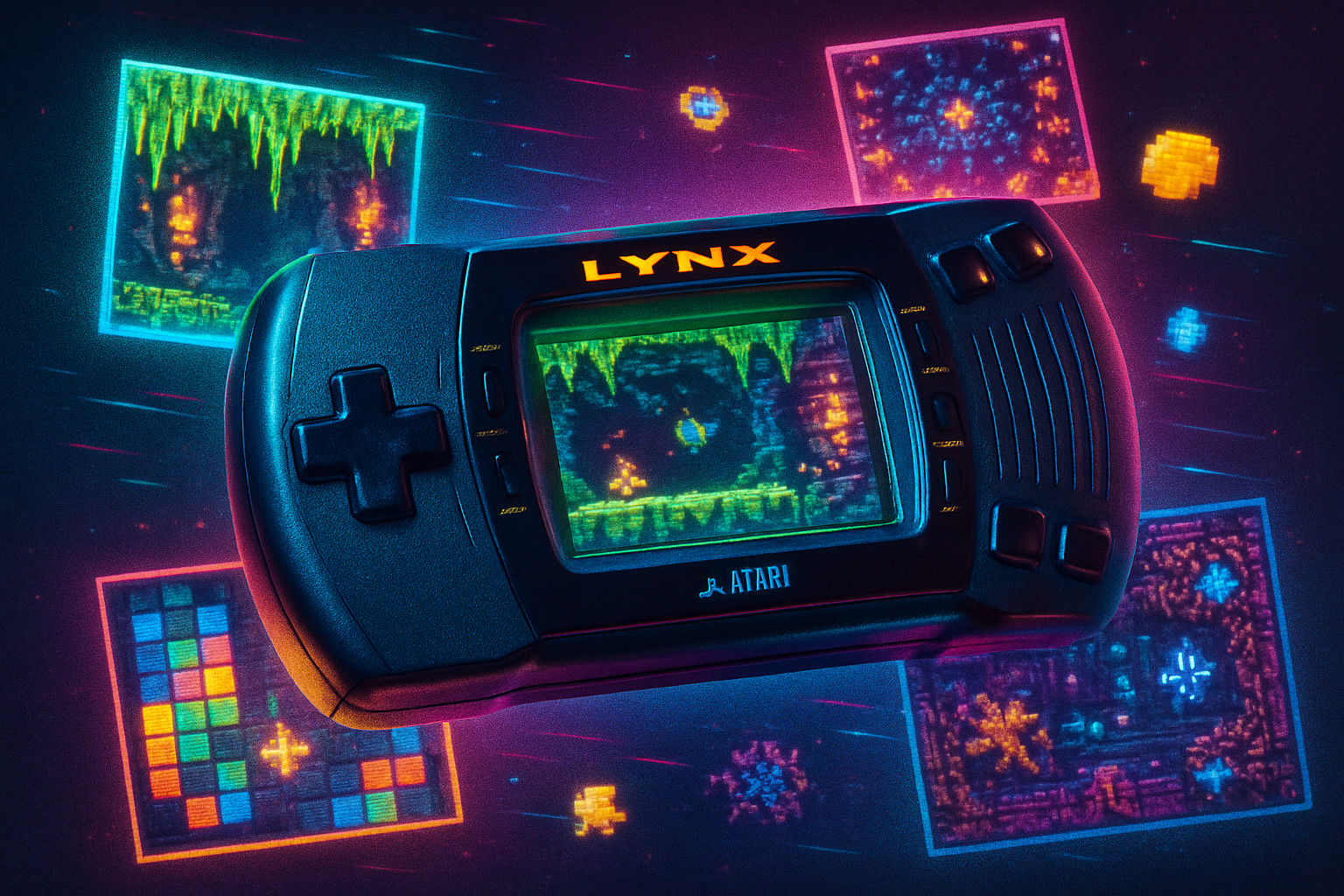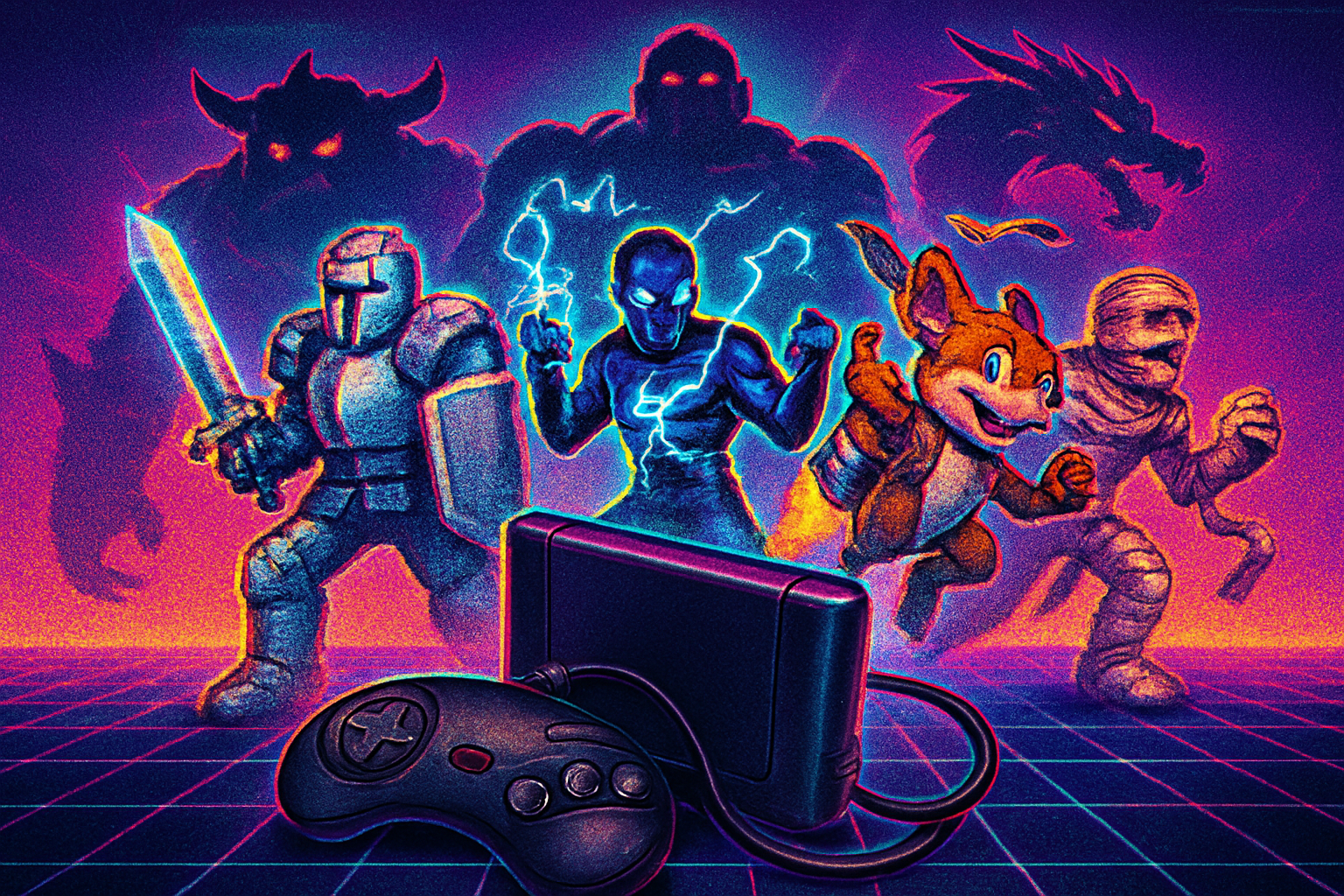· retrogaming · 6 min read
The Hidden Gems of the Sega Master System
The Sega Master System was the quiet, often-overlooked sibling in 8-bit gaming. Here are lesser-known cartridges - region exclusives, oddballs, and brilliant experiments - that reward curiosity with unique mechanics, cheeky storytelling, and design bravado.

I remember blowing dust off a beige Master System console in a humid attic and plugging it in like an archaeologist lighting a torch. The screen blinked to life, and instead of the usual mascot smirk or licensed tie-in, I found odd little worlds: a Donald Duck platformer with impeccable pacing, a cartoonish Alex Kidd riffing on ninja tropes, and a first‑person maze game that felt, against all logic, like a tiny, stubborn triumph.
The Master System never got the global heyday of the NES or the 16‑bit glamour of the Genesis. That’s exactly why it became a refuge for experiments and weird, regional delights. Developers had to do more with less - and sometimes the “less” forced them into cleverness.
Below: a short tour of underappreciated Master System games that deserve a second look. Expect shapeshifting, parody, maze paranoia, and RPG ambition packed into twelve kilobytes of grit and heart.
Why the Master System hid so many surprises
Think of the Master System as the indie stage at the hardware festival. Nintendo had ubiquity; Sega had pockets of passionate markets (Europe, Brazil, and parts of Asia). That fragmentation meant:
- Different libraries by region - games that were hits in Brazil or Europe can be near‑unknown in the U.S.
- Lean hardware budgets that encouraged inventive design workarounds.
- Ports from arcade and Japanese systems that were remade, not merely squashed, into distinct beasts.
The result: oddities and bold design choices that big‑budget markets might have ironed out.
1) The Lucky Dime Caper Starring Donald Duck (1991)
- What it is - A tight, crisp platformer where Scrooge McDuck’s nephews are either background props or paperweights of moral support.
- Why it’s a gem - It looks-and more importantly-feels better than many licensed games. Levels are varied, controls are forgiving but precise, and the sprite work is sharp for the system.
- Unique angle - It treats the Disney license like a design brief rather than a cash grab. Music is surprisingly atmospheric and the game respects your time: skill is rewarded, not barred by cheap deaths.
(Read more: https://en.wikipedia.org/wiki/The_Lucky_Dime_Caper_Starring_Donald_Duck)
2) Alex Kidd in Shinobi World (1990)
- What it is - A loving parody that mashes up Alex Kidd platforming with Shinobi boss patterns and ninjutsu gags.
- Why it’s a gem - It’s rare to see a company mock itself and make that mockery legitimately fun. Levels are dense with visual jokes; boss encounters riff on bigger Sega hits while standing on their own as solid encounters.
- Unique mechanic/story note - The game simplifies Alex Kidd’s moveset but amplifies boss choreography and punchy level design; the parody grants it freedom to play fast and loose.
(Read more: https://en.wikipedia.org/wiki/Alex_Kidd_in_Shinobi_World)
3) Golvellius: Valley of Doom (1988)
- What it is - An action‑RPG from Compile, with Zelda‑lite exploration and a surprising amount of dialogue and character.
- Why it’s a gem - On a system often seen as platformer‑oriented, Golvellius reaches for nonlinearity: towns, NPCs, secret passages and environmental puzzles - all fitted into the SMS cartridge economy.
- Unique mechanic/story note - The game rewards exploration with optional dungeons and little story beats. It’s not as sprawling as later action‑RPGs, but it nails the compact adventure.
(Read more: https://en.wikipedia.org/wiki/Golvellius)
4) Zillion (1987)
- What it is - A side‑view action shooter with puzzle elements, strongly tied to an anime of the same name.
- Why it’s a gem - The game balances shooting with switch puzzles and base infiltration. The world feels like a lived‑in sci‑fi cartoon, and the level progression forces you to think about tools and backtracking.
- Unique angle - It influenced later Metroid‑like pacing - you’re not just killing enemies, you’re solving a small, integrated mission each stage.
(Read more: https://en.wikipedia.org/wiki/Zillion_(video_game))
5) Maze Hunter 3‑D (1989)
- What it is - An early attempt at first‑person dungeon crawling on the Master System.
- Why it’s a gem - The Master System didn’t have polygon hardware; this game still tries to evoke 3‑D tension through textureless corridors, atmospheric beeps, and a claustrophobic map.
- Unique mechanic/story note - Early load‑on‑the‑fly mapping and line‑of‑sight tricks make navigation feel weighty. It’s less about flashy visuals and more about building a mood of hunt and paranoia.
(Read more: https://en.wikipedia.org/wiki/Maze_Hunter_3-D)
6) Psycho Fox (1990)
- What it is - A bizarrely delightful platformer where you can transform into different animals with distinct abilities.
- Why it’s a gem - The game gives you forms to solve platforming puzzles - one animal can glide, another can break blocks - and it does so with personality (and a conspicuous headwear fetish).
- Unique mechanic/story note - Transformation is integrated into level design rather than tacked on. Choosing the wrong form at the wrong moment can turn a short stage into a comical disaster.
(Read more: https://en.wikipedia.org/wiki/Psycho_Fox)
7) Quartet (1986)
- What it is - An arcade co‑op shooter port that, on supported hardware, can feel like organized chaos.
- Why it’s a gem - Its emphasis on simultaneous play and frenetic enemy patterns makes it a party‑friendly alternative to single‑player shooters.
- Unique mechanic/story note - Quartet’s design anticipates later couch‑co‑op obsessions: shared screens, emergent friendly fire situations, and level sequences meant to be consumed by teams.
(Read more: https://en.wikipedia.org/wiki/Quartet_(video_game))
8) Wonder Boy III: The Dragon’s Trap (SMS version)
- What it is - A genre‑bending platformer/RPG where players change forms and acquire altered abilities.
- Why it’s a gem - The shapeshifting mechanic isn’t just cosmetic; it forces you to rethink traversal and combat. The SMS port retains much of that design DNA, and the game’s pacing is mercilessly fair.
- Unique mechanic/story note - Changing into a lizard, lion, or bird isn’t just a new sprite - it rewires movement, jump arcs, and item interaction, creating emergent puzzle‑platforming.
(Read more: https://en.wikipedia.org/wiki/Wonder_Boy_III:_The_Dragon%27s_Trap)
What these games teach designers (and players)
Constraints sharpen creativity. When memory, color palettes, and regional markets are limited, designers make one of two choices: they either neuter ambition or distill it. The Master System often did the latter.
A few recurring lessons:
- Economy breeds clever mechanics. Short ROM budgets meant a single system (shapeshifting, item swapping) had to carry many design moments.
- Parody can be a form of invention. Games like Alex Kidd in Shinobi World turn franchise references into new design choices rather than lazy grafting.
- Regional oddities matter. Brazil, Europe, and Japan got different lists - treasure exists in the margins.
Where to start if you want to try them now
- Emulation and ROM collections will surface most of these titles quickly; always check legality where you live.
- Several have been reissued in compilations or on modern retro platforms - look for official ports to avoid the odd emulation quirk.
- If you want an old‑school feel, hunt for cartridges - some SMS titles were produced in small batches and can be fun collector’s items.
Final note: the joy of looking sideways
Mainstream history loves winners. It prefers tidy narratives: hero console beats rival console, era defined. But consoles like the Master System reward sideways looks - the little experiments, the regionals, the cartoonish parodies - the things that don’t tidy up into a corporate headline.
Play a weird Master System cartridge. Let constraints produce surprise. You might find something true: that excellence often hides in corners where no one expected it.
References
- Wikipedia: The Lucky Dime Caper Starring Donald Duck
- Wikipedia: Alex Kidd in Shinobi World
- Wikipedia: Golvellius
- Wikipedia: Zillion (video game)
- Wikipedia: Maze Hunter 3‑D
- Wikipedia: Psycho Fox
- Wikipedia: Quartet (video game)
- Wikipedia: Wonder Boy III: The Dragon’s Trap



